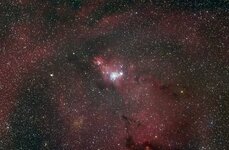I had a very nice telescope many years ago. Spent a good bit of money on it. I found out i'm not a night owl and you have to be up at night to use it. So I sold it. Stuff like the above makes me wish I could have gotten into it.
It's something that's never interested me. The scenes are always the same, there's no way anything I could find through a scope can match what the pros do, I'll just enjoy looking at what they get.









